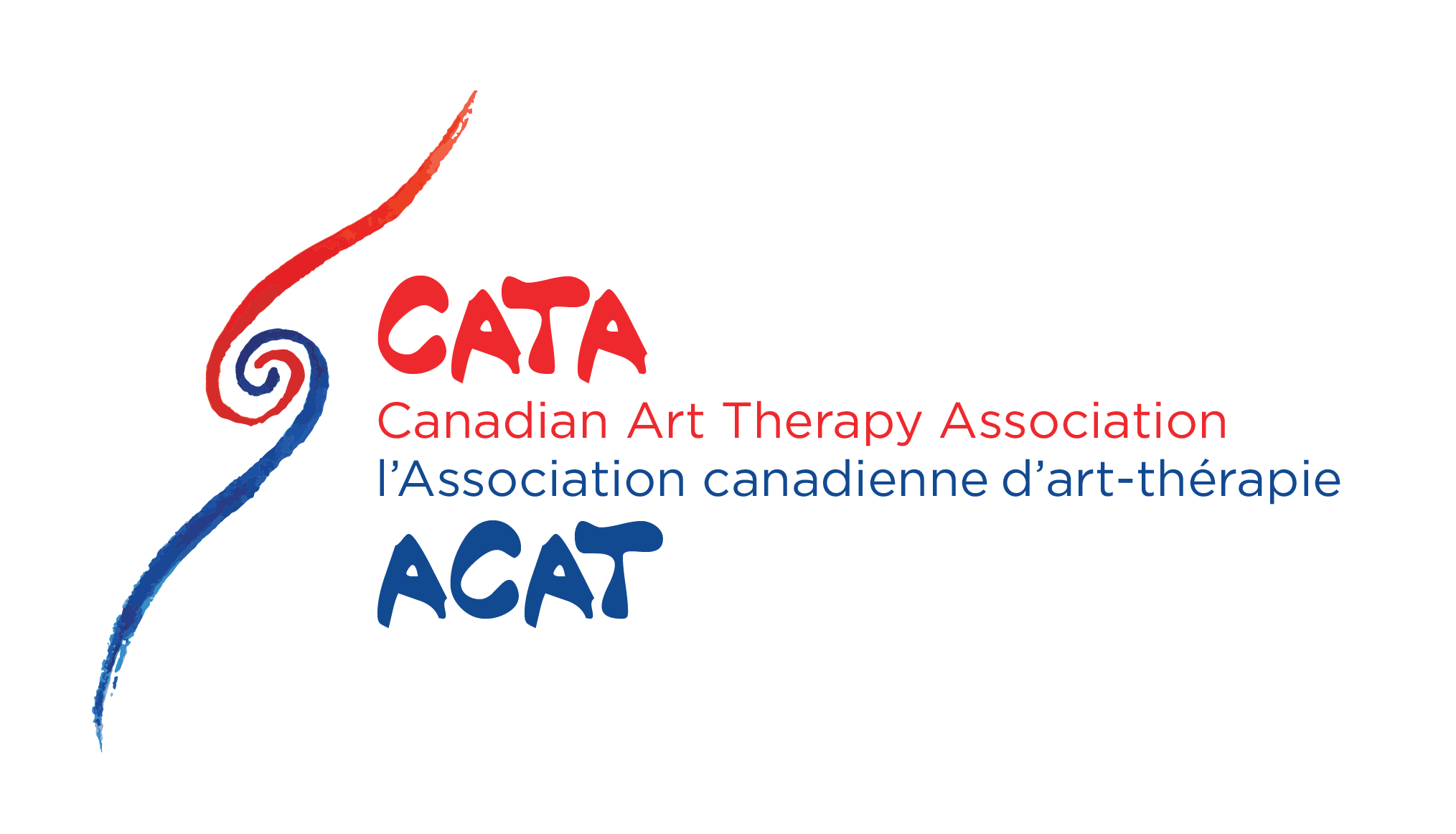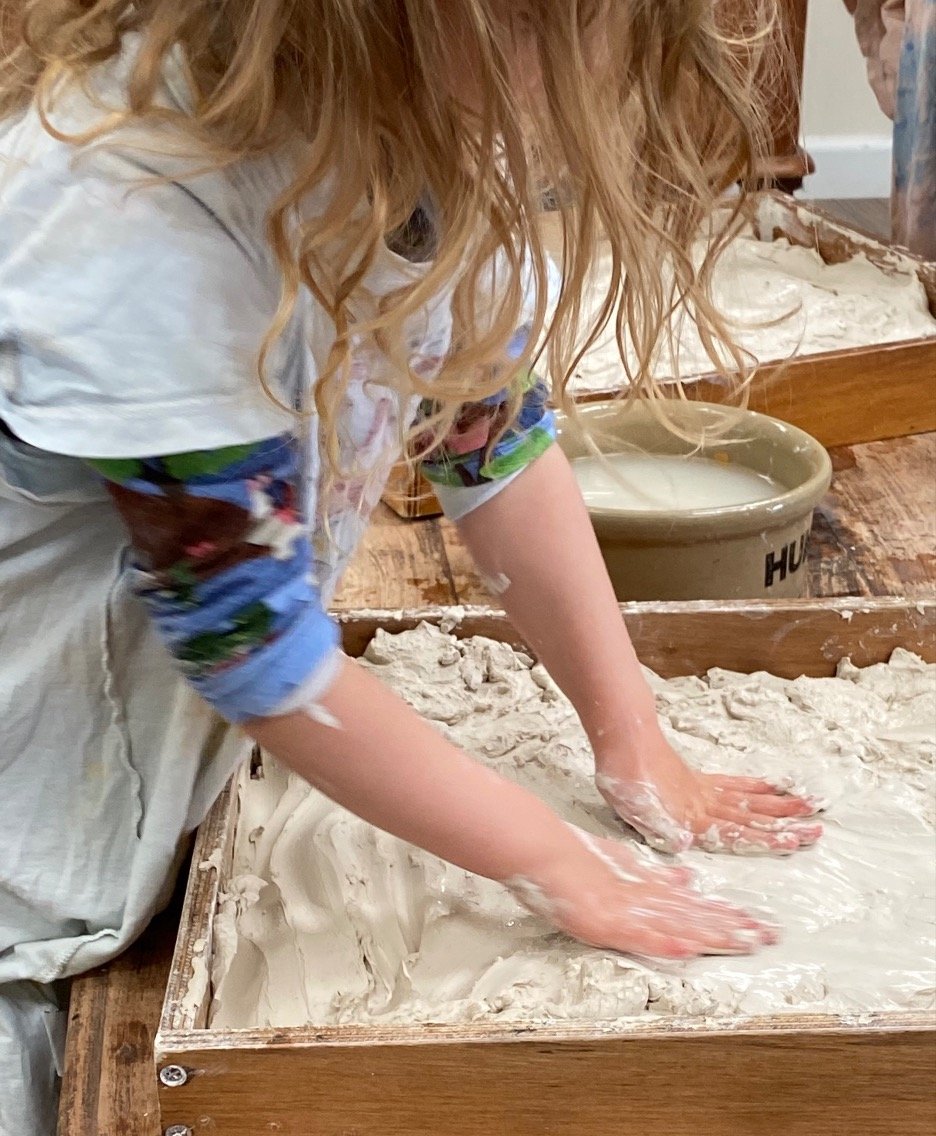A Conversation with Cornelia Elbrecht
Art Therapy Conversations is a regular column in Envisage, developed and written by Rebecca Montgomery. We thank Rebecca for her dedication and creativity in facilitating learning and expanding connections between art therapists! In this issue, Rebecca sits with Cornelia Elbrecht, art therapist and founder of the Institute for Sensorimotor Art Therapy, as she discusses her work with clay field therapy and the importance of touch in her practice. You can also check out a review of Cornelia’s latest book later on in our issue.
Cornelia Elbrecht is an art therapist, author and educator, and the founder and director of the Institute for Sensorimotor Art Therapy. She has recently come out with her fourth book, “Healing Trauma in Children with Clay Field Therapy” which dives into how working with clay can be a valuable tool for reparation and somatic-based trauma healing. Cornelia has over 40 year’s experience with art therapy, and is also known for her work with Guided Drawing. She has studied at the School for Initiatic Therapy in the Black Forest, Germany, holds degrees in fine arts and arts education, training in Jungian and Gestalt Therapy, bioenergetics, and Somatic Experiencing at the Somatic Experiencing Training Institute. Between teaching online courses and holding workshops, she enjoys walking the many beautiful acres at the Claerwen Retreat in Apollo Bay, Australia.
Rebecca’s narrative in italics below.
Hello Cornelia! It is wonderful to be joining you in conversation. I’d like to start by asking you a few short and sweet questions before diving into the bigger ones.
In one word, how are you feeling right now?
Excited, because after 3 years of lockdown and Covid restrictions I am off to leave for 10 weeks in Europe.
What was the last thing that made you laugh?
When a large mob of kangaroos raced to my verandah when it started to rain heavily this morning.
Is there a quote from a writer/artist that is special to you?
“Touch comes before sight, before speech… It is the first language and the last, and it always tells the truth.” - Margaret Atwood.
What was your relationship like with art as a child? What are some of your earliest memories and mediums that you used?
Art has always been in my life. It saved my life as a child. I was a prolific creator. Drawing and painting, of course, but I also recall making beautiful puppets from paper maché, sewing dresses for my dolls, creating magic picture books, knitting in the dark in bed at boarding school to survive. I could go on and on.
“Art has always been in my life. It saved my life as a child. I was a prolific creator.”
Beginning your studies and career during a time when “art therapy” wasn’t really a known thing yet, how did it feel to find the School for Initiatic Therapy in the Black Forest, Germany?
It was a relief. I had finally found my tribe. Studying psychology and sociology during the height of the student revolution in Frankfurt, Germany, I had felt like an alien. Everything was about rats and mice and politics. Then I switched to a fine arts degree, and it became about how much noise can you make to become famous, as otherwise you will be penniless? Also, I could not handle the critique of my art work. All this dropped away when I arrived in the center in the Black Forest, when art was honored as a window into your soul, which was how I had always experienced it.
In your book on clay field therapy, we begin by seeing that the Clay Field is a flat wooden box filled with approximately 20 pounds of clay that has been smoothed over. What inspired this shape in particular?
Heinz Deuser invented Work at the Clay Field. We studied together and I was his guinea pig when he began experimenting with clay as a touch therapy with closed eyes. Having placed a big lump of clay in front of me prompted me to sculpt with the clay. Hence he had the idea of a “field”, which he created from an old window frame onto which he nailed a timber bottom and then filled it with clay. The field invited the hands to just be there, to engage with the sensorimotor relationship this setting invited, rather than with intentional creating. All clay fields today still have the size of this old window frame.
Why is clay a good medium for touch therapy?
Clay invites the connection with our hands. Whenever I touch the clay, I am also being touched by it. Each motor impulse projected into the Clay Field, receives sensory feedback from the connection with it. It is this sensorimotor feedback loop that turns the therapy into a relational experience, rather than one of object creation. Touching the clay provokes conscious and unconscious associations with past touch experiences. As the hands reach out, they hesitate: will this other-than-me be friendly or hurt me? Can I caress it safely or will I be abused? Will it be cold and unresponsive, or can I have lots of it and get my needs met? Can I realize myself in this environment without being shamed?
Touch is likely the most underestimated of our senses. Art therapy focuses mostly on the visual sense; it emphasizes object creation and the ensuing cognitive process of meaning making. Visual perception, however, develops relatively late in infants, whereas touch is the first of our senses already fully functional in utero from 6 weeks of gestation onwards.
“Touch is the glue of the senses. It is instrumental in multisensory integration, which in turn, is at the root of our sense of body ownership.”
Touch is the glue of the senses. It is instrumental in multisensory integration, which in turn, is at the root of our sense of body ownership. This is something most people take for granted, but without touch, and without the biochemical reaction it ensues, we do not come into being. If we cannot safely connect with others, all the other senses shut down or become compromised.
Clay Field Therapy is widely non-verbal. It does not require making things, which is a huge relief for all those children, who need to integrate their sensorimotor base first, before they can reliably develop their higher brain functions.
Throughout the past years of the pandemic, where so many of us have been afraid to touch not just each other but also things, can working with the clay field help us reconnect to touch again?
During COVID-19, touch is the sense that has paid the highest price. However, if we are out of touch, we are out of touch with ourselves. Touch, even the lightest, releases oxytocin, also called the love hormone. Mothers after birth, for example, are flooded with oxytocin. Babies understand love and safety– or the lack of it– through the quality of touch they receive from their caregivers. Attachment is communicated through touch. Touch regulates our nervous system. All abuse, accidents and medical procedures involve touch, and many of these incidents cause lasting trauma.
“During COVID-19, touch is the sense that has paid the highest price. However, if we are out of touch, we are out of touch with ourselves.”
Without touch we cannot survive. Just like the Romanian babies in the 1980s, we will either die or develop severe mental health problems, which has, for example, become evident during this pandemic.
These days we see thousands of children in therapy who are out of touch with themselves, who suffer from attachment trauma, or lack of outdoor play such as building dams and mud castles. The digital age has got us all hooked on screens, and we are drifting into increasing social isolation. Not being part of a tribe, however, is life-threatening for the developing brain. I am certain that various forms of touch therapy will increasingly become core therapeutic interventions in the near future.
It is amazing that you have been able to provide online training that has done so well throughout the pandemic. Will there be further training about the clay field?
We are currently working on a comprehensive online training course to accompany my book Healing Trauma in Children with Clay Field Therapy. From 2023 onwards we will be able to offer this as a certified professional development, enabling mental health professionals to train in this amazing modality.
Your book is full of impactful stories of client’s interactions with the clay field. Will the specialized training include experiences like this as well?
We have filmed over 300 Clay Field Therapy sessions with children, which will illustrate the tutorials on how to work with preschoolers, primary school children and adolescents. You can find all the relevant information on our website www.sensorimotorarttherapy.com.
Thank you, Cornelia, for your work and your words. I was very inspired reading your book and it has helped me learn and understand more about trauma - and in what creative ways we can process and “shake it out”, so to speak. Now that the world is beginning to open up again after isolation, I wish you all the best in your travels and in reconnecting with friends! And I look forward to hearing about your projects in the future.
Rebecca Montgomery has been a regular interview columnist for Envisage since December of 2020. She is an interdisciplinary artist working out of Mount Pleasant in Vancouver, BC, the traditional territories of three Local First Nations: the Musqueam, Squamish, and Tsleil-Waututh. Art therapists (and the like) are “her people”, she likes to say, as she knows art to be a powerful modality for healing and connection. When she’s not creating, you can likely find her by the ocean with a hot mug of tea, recounting an episode of RuPaul’s Drag Race with loved ones.






